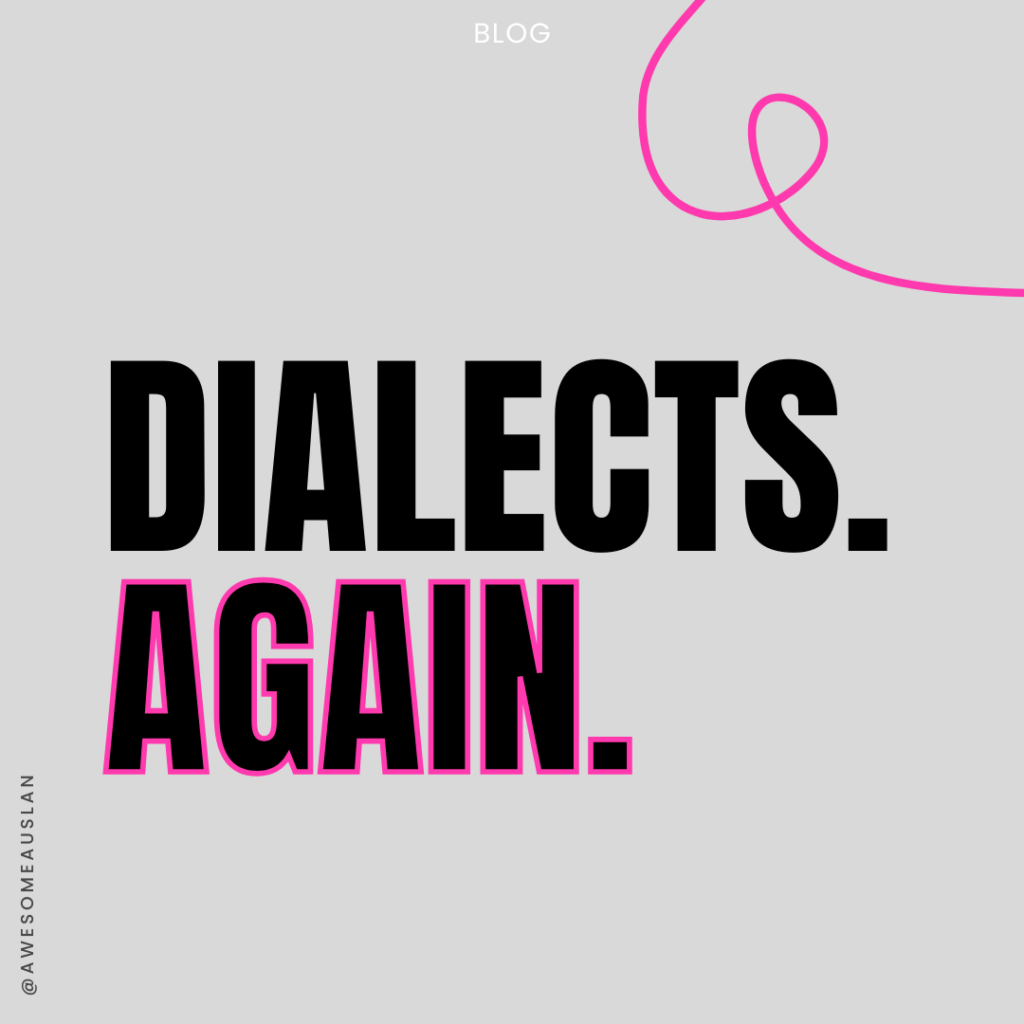I also receive regular emails asking whether my online beginner Auslan course or tutoring sessions are based on the northern or southern dialect.
While it’s great that people are becoming more aware of dialects within Auslan, I believe this focus is often a little too intense — even to the point of distraction. And I want to explain why.
Auslan Variation: It’s Not Just About Geography
Yes, Auslan has dialects. But regional variation is only one reason for differences in signs across the country. There are many other factors that influence how people sign:
- Geographical location
- Social groupings and history
- Educational experiences
- Age of the learner
- Family background
- Sign language exposure
- Degree of contact with Signed English and other languages
Linguists have noted that “regional variation rarely leads to confusion or misunderstanding among native signers” (p.46). That’s important. Auslan dialects don’t affect the entire language — they influence specific signs. Which is why, when I’m asked which dialect I teach, my answer is simply: Auslan.
A good Auslan teacher will always introduce multiple versions of a sign when variations exist and explain them clearly.
Dialect and Language Go Hand in Hand
All living languages have variation — accents, dialects, vocabulary differences. That’s what happens when people use language over time and space.
Think of English:
- Boot can mean footwear or the trunk of a car.
- Australians say scones, Americans call them biscuits.
- Our biscuits are their cookies.
- Togs, swimmers, bathers, swimwear — they all mean the same thing.
- Trolley, shopping cart, buggy — again, same concept, different words.
Do we panic when we travel to another English-speaking country and hear different words? Of course not. And the same applies to Auslan.
Northern and Southern Dialects: A Brief History
Yes, Australia has two main dialects in Auslan: northern and southern. These originate from the different backgrounds of the two deaf educators who founded the first residential schools for the deaf in Sydney and Melbourne in the 1860s:
- Thomas Pattison, from Scotland, founded the Sydney school – origin of the northern dialect.
- Frederick John Rose, from England, founded the Melbourne school – origin of the southern dialect.
These state and dialect differences are still visible today. Often, they hint at someone’s place of origin or the school they attended. Traditionally, these differences are mostly limited to vocabulary — colours, numbers, animals, days of the week — while grammatical differences are minimal.
Dialect Boundaries Are Blurring
I want to highlight the word “traditionally” — because for many years, the dialects were distinct and easy to tell apart.
But in the past 30–40 years, a lot has changed:
- People move and travel interstate more often.
- Deaf organisations and education providers now operate nationally.
- Teachers come from all over Australia.
- Video calls and social media (Zoom, Skype, FaceTime, etc.) connect people across regions.
As a result, the once-clear north/south lines are blurring. It’s increasingly common to see northern signs used in the south and vice versa. Learners quickly discover that some words have multiple acceptable signs.
When I teach Auslan in childcare centres, especially colours, I always start by asking what signs the children and staff already know. I use the signs they’re familiar with and introduce other versions — for example, for YELLOW, GREEN, BLUE, PINK, etc. This way, they’re better prepared to communicate with a wider range of Auslan users.
A Word of Caution: Don’t Fear the Dialects
I’ve noticed many new Auslan learners are overly focused — even fearful — about dialects. Some act like they’re learning two different languages.
This blog post is my response to the flood of Facebook comments about whether a resource is “northern” or “southern.” Some people are rejecting perfectly good Auslan videos or materials just because one or two signs come from the ‘other’ dialect.
Let me say that again: Excellent Auslan resources are being dismissed over one or two dialect differences.
One argument I hear often is:
“But I’m teaching children. If I show them different signs, they’ll get confused!”
Actually, it’s the opposite. If you only teach them one version of a sign, they’ll be more confused when they meet someone who uses a different version.
Use those dialect differences as a teachable moment!
A Personal Example
I live in Queensland and often use Kerrie Taylor’s (Auslan Hub) book “Visit to the Zoo” to teach various linguistic concepts. It includes two signs that differ by dialect: HUNGRY and ANIMAL.
Should I throw out this fantastic resource because of that? Absolutely not. I use it to talk about sign variation — and in doing so, help learners understand the rich diversity of Auslan.
Final Thoughts
Instead of fixating on dialect differences with fear or frustration, let’s get curious and excited.
Dialects are not a problem to solve — they’re a living, breathing part of Auslan’s history and evolution.
Let’s honour that. Let’s teach it. And most importantly, let’s embrace it.
Hope you found this handy and keep up your Awesome Auslan!
Disclaimer: This information is entirely subjective and based on my personal experience, interpretation and understanding of the subject matter.
This blog was written in May 2025.
List of Auslan resources: Australia Sign Language – An introduction to sign language linguistics by Trevor Johnston and Adam Schembri (p.46), Auslan Hub.

